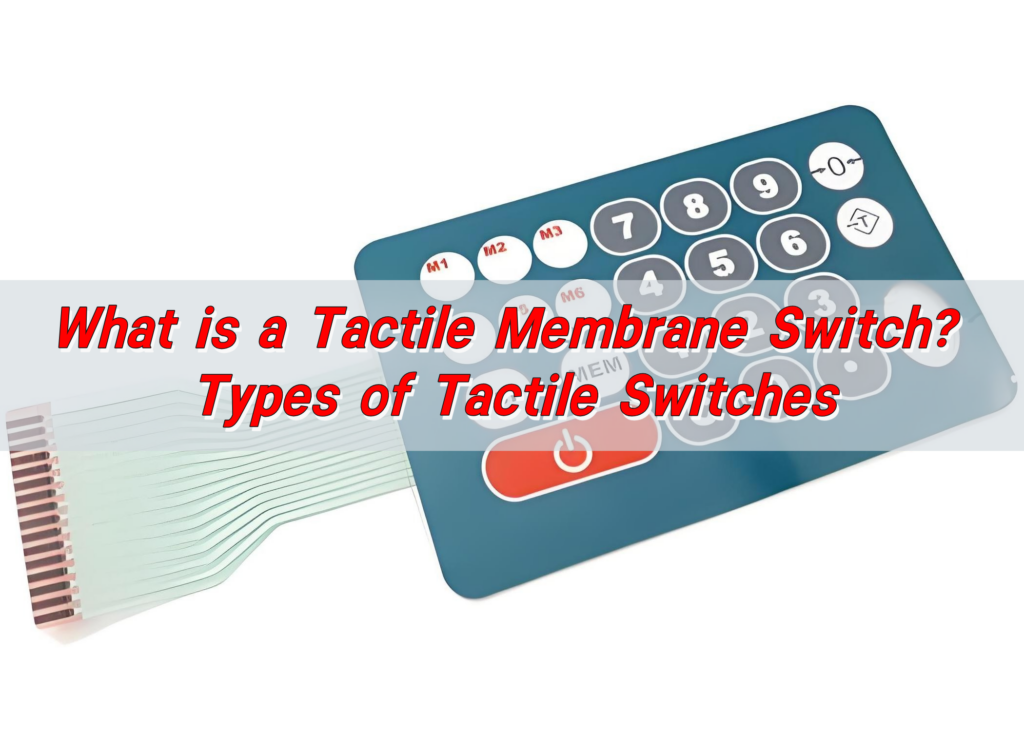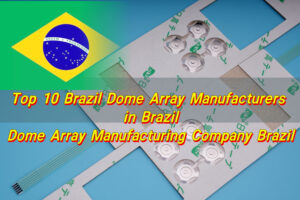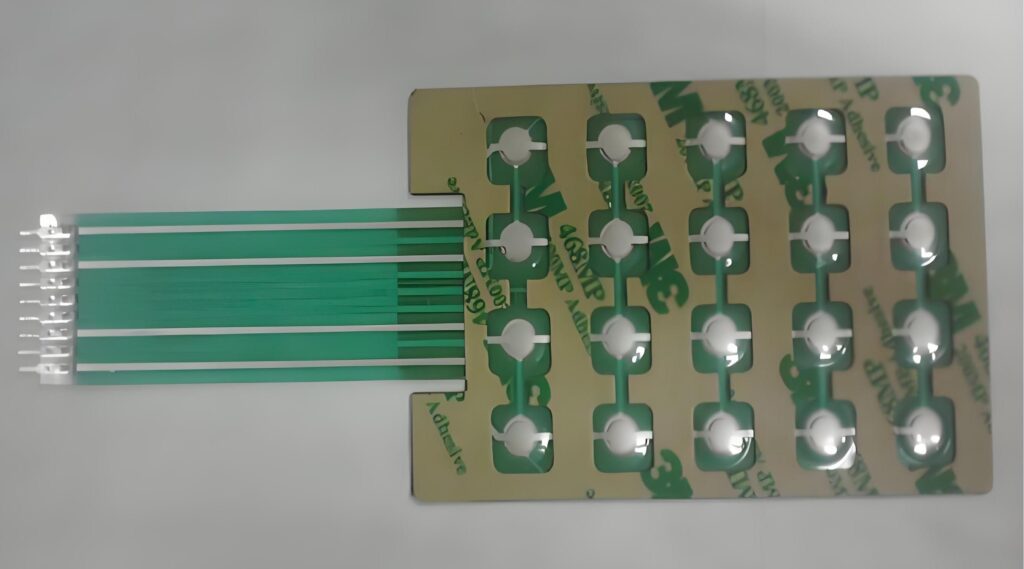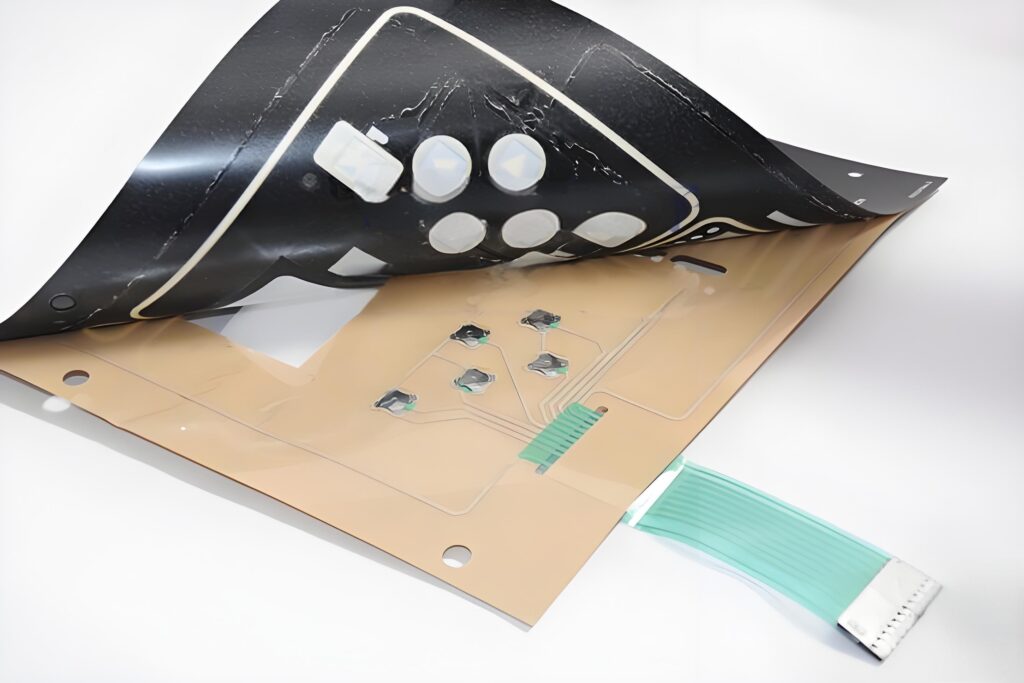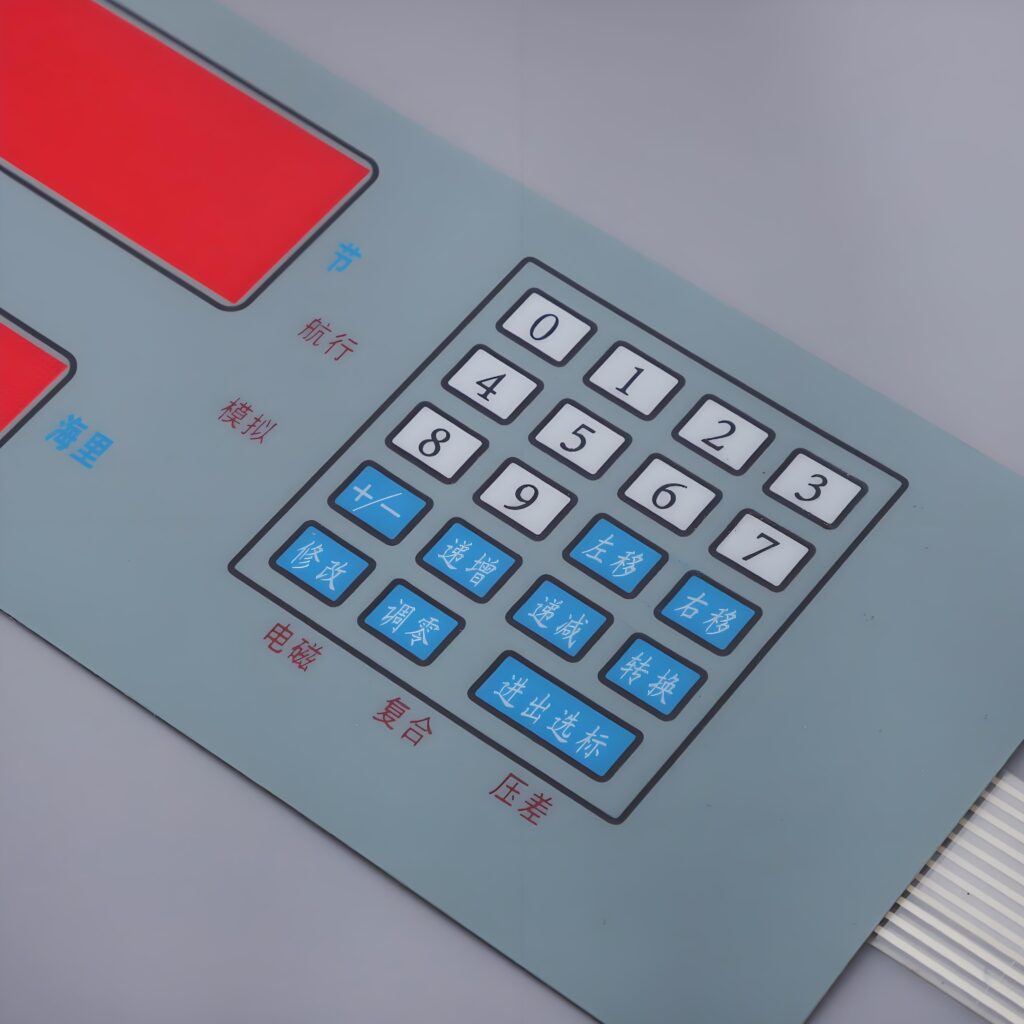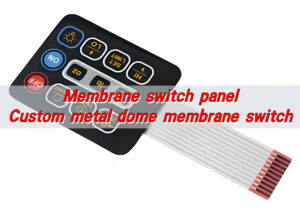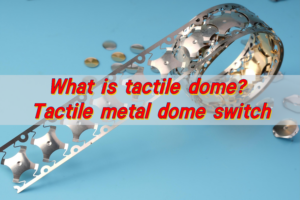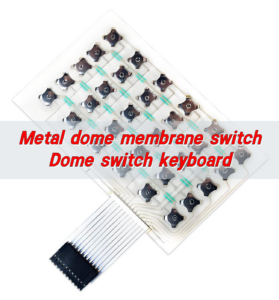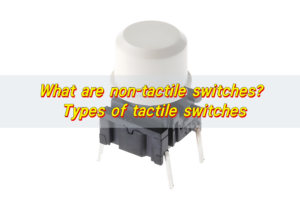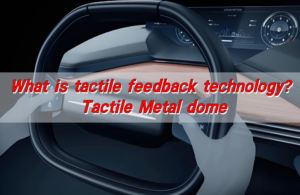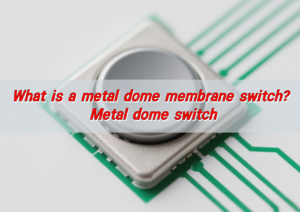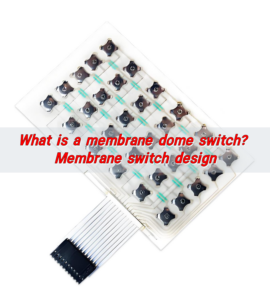Tactile membrane switch is a membrane switch that turns on the circuit by pressing, with tactile feedback and stable operation. The metal dome type tactile membrane switch provides tactile feedback and conductive function through the metal dome, enhancing the operating feel and durability. The metal dome is installed under the button and the circuit is opened and closed by deformation, which is suitable for high-frequency operation occasions.
What is a tactile switch?
Tactile switch is a momentary button. It creates a physical response when pressed. The user gets immediate feedback—a slight pop or snap—telling them their input was received. That small snap makes a big difference.
Tactile switches are designed for interaction. They’re not just electrical contacts. They’re communication tools between machine and user. You feel them. You trust them.
They use materials like conductive rubber or metal domes to achieve that feedback. In membrane switches, the tactile element is often built into a thin, flexible layer. That makes them great for slim, sealed designs.
What are the types of tactile switches?
The world of tactile switches is diverse. Each type serves different needs, environments, and product goals.
- 1.Metal Dome Tactile Switches
The most common type in high-end membrane keypads. These use a tactile metal dome under the surface. When you press the button, the dome collapses and instantly bounces back, providing a firm tactile response.
- 2. Poly-Dome Switches
These use a polyester dome that gives tactile feedback. While not as crisp as metal domes, they’re more flexible. They’re often used when budget matters more than the snap feel.
- 3. Rubber Dome Tactile Switches
These are made with silicone rubber domes. They’re soft and silent. They’re often used in consumer electronics and membrane switch keyboards.
- 4. Membrane Tact Switch
Membrane tact switch combines a flat membrane structure with tactile features. It’s slim, reliable, and resistant to dust and moisture.
Each type has its own feel. Some offer a soft bump. Others deliver a sharp click.
What are the disadvantages of tactile switches?
While tactile switches are full of benefits, there are a few trade-offs. But they’re minor when compared to what you gain.
- Limited actuation life: Especially with cheaper materials. Metal domes usually last longer, but some tactile switches may wear out over time.
- Design complexity: Tactile feedback requires additional layers like domes or embossing. This can make design slightly more complex than non-tactile membrane switch layouts.
- Cost variance: A high-quality tactile membrane switch push button might cost more than its non-tactile counterpart.
However, these downsides are small when compared to the increased user satisfaction and product quality tactile switches bring.
Where are tactile switches used?
Almost everywhere. These switches are used in:
Medical devices?Industrial machines?Consumer electronics?Kitchen appliances?Remote controls?Security systems?Control panels?Custom input devices
Any device that needs reliable, intuitive user input can benefit from tactile switches. Users trust them. They improve usability. They make technology feel more human.
What is a metal dome membrane switch?
Metal dome membrane switch is a type of tactile switch built into a thin, flexible surface. At its heart is a small stainless-steel dome. When you press it, the dome collapses and creates both an electrical contact and a crisp tactile snap.
This style of switch gives a premium feel. It’s often used in professional equipment where precision matters. These domes come in various shapes—four-leg domes, triangle domes, or round domes. Each shape offers a slightly different tactile force and response.
They’re sealed, flat, and often printed with custom graphics. That means they not only function well but also look professional. The tactile metal dome makes the interaction feel alive.
What is a membrane switch used for?
Membrane switch is used to trigger actions on electronic devices. It replaces bulky mechanical switches with a thinner, more reliable alternative.
They’re found in: Fitness equipment?Control systems?Diagnostic machines?Smart appliances?Touch-based interfaces
These switches are also easy to clean and resistant to dirt and fluids. That makes them ideal for environments where hygiene is key.
What is the advantage of membrane switch?
- Slim profile: They fit into tight spaces, even in handheld devices.
- Sealed surface: Perfect for dusty or wet environments.
- Long life: No exposed moving parts means fewer failures.
- Custom design: Graphics, icons, and colors can all be tailored.
- Low power consumption: Ideal for battery-operated systems.
- Silent or tactile operation: You choose what works best.
You can also design a custom membrane switch to match your product’s branding and ergonomics.
Why do membrane switches use metal domes?
The metal dome is the hero behind the tactile feel. It’s why your finger knows a press has been registered. But it’s not just about feeling good.
Metal domes increase reliability.
- They provide a distinct tactile snap.
- They reduce input errors.
- They last longer under repeated use.
More than that, they give your product a premium touch. It’s a small feature with a big impact.
Which type of membrane switch is best?
The best type depends on your needs. But in most cases, a tactile metal dome membrane switch is the top choice.
Here’s why:
- It delivers excellent feedback.
- It looks professional.
- It performs reliably over time.
- It’s easy to integrate into both simple and complex systems.
However, if silence or extreme budget constraints matter, non-tactile membrane switch types can still perform well.
Tactile membrane keypad is perfect when clarity, speed, and confidence in input are important. If you’re designing for harsh conditions, a sealed membrane switch panel with metal domes is often ideal.
Conclusion:
Tactile membrane switches are more than just components. They’re the touchpoints between humans and machines. Whether you’re building medical devices, home appliances, or industrial tools, the tactile switch makes a real difference.
And if you’re seeking the best solution—whether a membrane switch keyboard, a tactile membrane switch push button, or a fully customized design—we’re here to help. Reach out to us at sales@metal-domes.com to learn more about how the right switch can transform your product experience.


